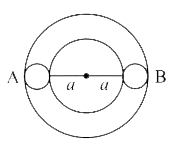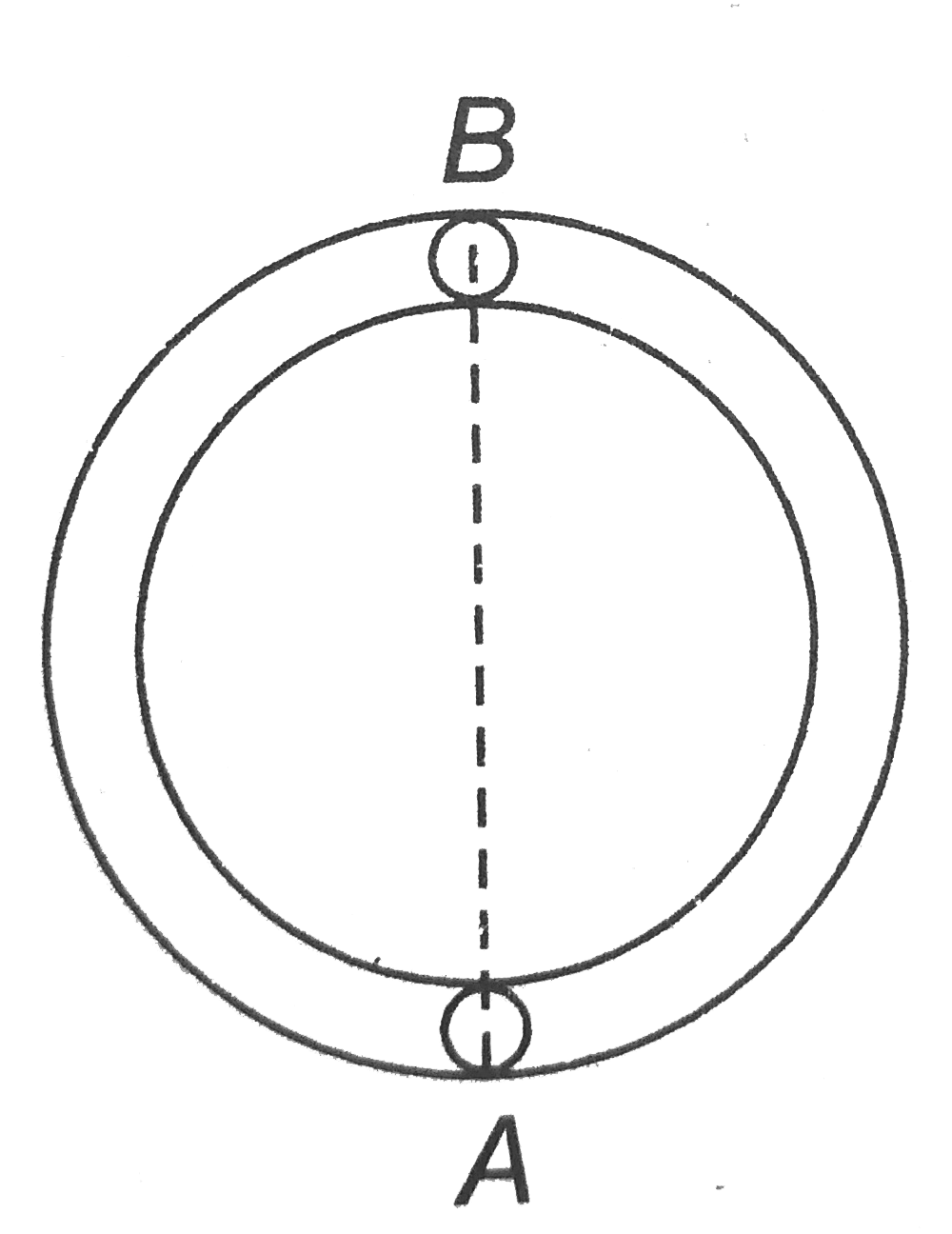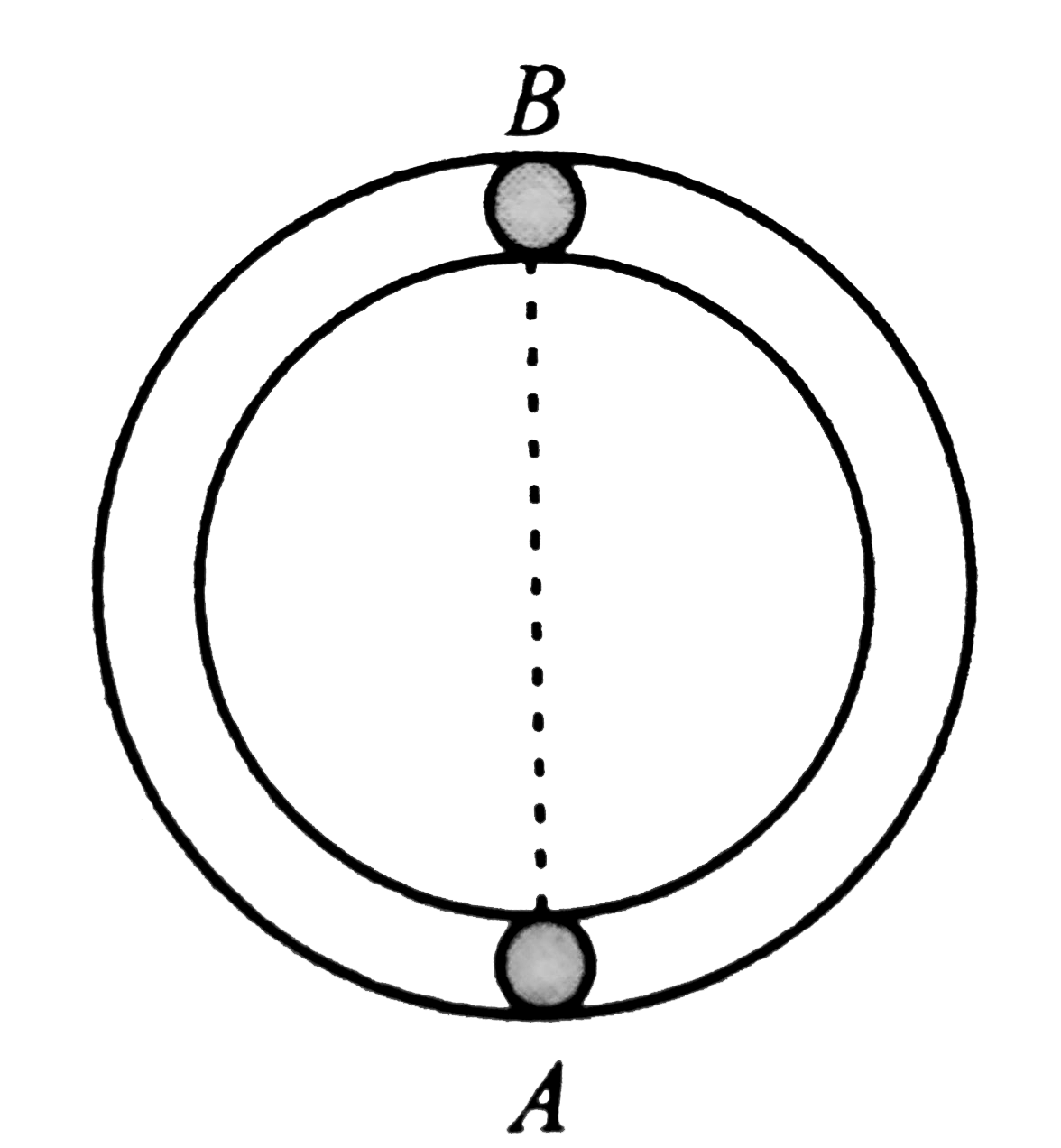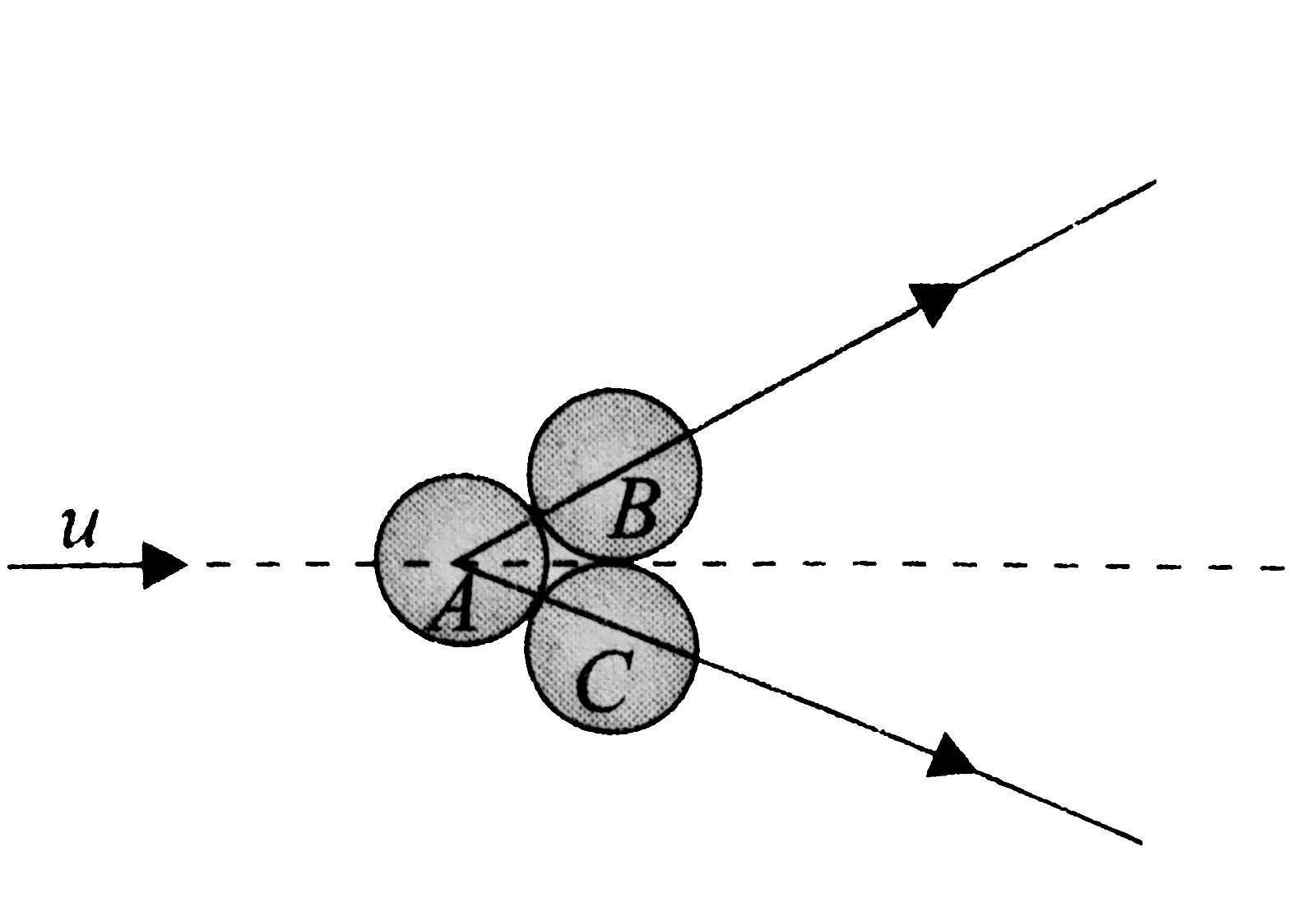Two identical spheres A, B are in a smooth horizontal circular smooth groove at opposite ends of a diameter. A is projected along the groove and it impinges on B in a time interval T. Let e be the coefficient of restitution, the

2πte
πte
te
2te
The correct Answer is:D
Step by step video, text & image solution for Two identical spheres A, B are in a smooth horizontal circular smooth groove at opposite ends of a diameter. A is projected along the groove and it impinges on B in a time interval T. Let e be the coefficient of restitution, the by Physics experts to help you in doubts & scoring excellent marks in Class 12 exams.
Updated on:21/07/2023Topper's Solved these Questions
Similar Questions
A small ball is projected with a velocity u at some angle with horizontal towards a smooth vertical wall at a distance d from the point of projection after rebounding from the wall . If e is the coefficient of restitution then find maximum distance d for which ball may return to point of projection .
View SolutionA wedge of mass M and angle α rests on a smooth horizontal plane. A smooth sphere of mass m strickes it in a direction perpendicular to its inclined face and rebounds. If the coefficient of restitution is e, find the ratio of the speed of the sphere just before and just after the impact.

View Solution
Knowledge Check
Two identical spheres P and I lie on a smooth horizontal circular groove at opposite ends of diameter. Pis projected along the groove and at the end of time t, impinges on Q. If e is coefficient of restitution, the second impact will occur after a shortest time of
A2πteBπteCteD2teTwo equal sphere Aandb lie on a smooth horizontal circle groove at opposite ends of a diameter. At time t=0,A is projected along the groove and tis first implings onB at time t=T1andaga∈attimet = T_(2). If e is the coefficient of restitution, the ratio T2/T1 is
 A2eB(2+e)2C2(e+1)eD2+ee
A2eB(2+e)2C2(e+1)eD2+eeTwo equal spheres A and B lie on a smooth horizontal circular groove at opposite ends of a diameter. At time t=0, A is projected along the groove and it first impinges on B at time t=T1 and again at time t=T2. If e is the coefficient of restitution, the ratio T2/T1 is
 A2eB(2+e)2C2(e+1)eD(2+e)e
A2eB(2+e)2C2(e+1)eD(2+e)e
Two sphere A and B of equal masses lie on the smooth horizontal circular groove at opposite ends of diameter and at the end of time 't','A' impings on 'B' . If 'e' is the coefficient of restitution, the second impinge will occur after a time
View SolutionTwo sphere A and B of equal masses lie on the smooth horizontal circular groove at opposite ends of diameter and at the end of time 't','A' impings on 'B' . If 'e' is the coefficient of restitution, the second impinge will occur after a time
View SolutionA smooth hoop lie as on a smooth horizontal table and is fixed. A particle is projected on the table form a point A on the inner circumference of the hoop at angle θ with radius vector . If e be the coefficient of restitution and the particle returns to the point of projection after two successive impacts. The final angle θ' made by velocity vector with radius of hoop is

View SolutionTwo equal spheres B and C, each of mass m, are in contact on a smooth horizontal table. A third sphere A of same size as that of B or C but mass m/2 impinges symmetrically on them with a velocity u and is itself brought to rest.

The coefficient of restitution between the two spheres A and B (or between A and C) is
View SolutionA long block A is at rest on a smooth horizontal surface. A small block B, whose mass is half of A, is placed on A at one end and projected along A with some velocity u. The coefficient of friction between the blocks is μ:

View Solution
